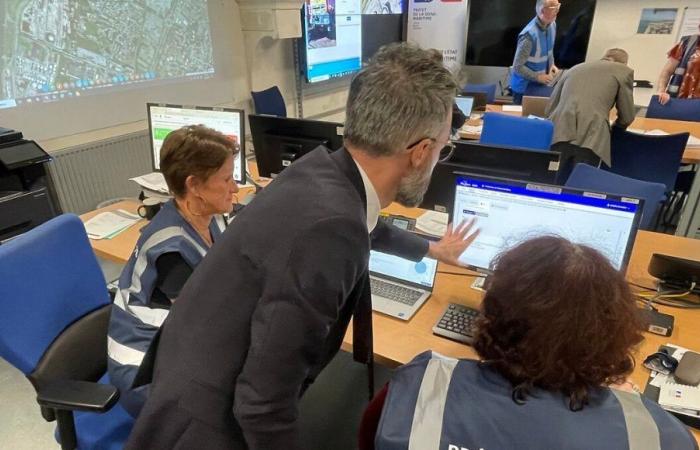
It made a lot of noise, it even surprised some: many residents of the Rouen metropolis received, this Tuesday morning, one or even several notifications FR-Alert. The device was used as part of the largest exercise of its kind in the department. The prefecture organized a industrial incident simulation at the LAN Nitrogen factory, in Grand-Quevilly (Seine-Maritime). The authorities wanted to test the responsiveness of information methods but also of residents in the event of an industrial disaster. The first point is rather successful, believes Clément Vivès, chief of staff of the prefect, in charge of the operation. “I believe this is the first time in the department and, certainly, one of the first times in France that we have managed to alert so many people with the FR-Alert system. There were 25,000 for the first message during the start of the leak as it was played More than 350,000 in the second part who received this information.“
Some questions about information systems
The FR-Alert notifications were sent, first, within a radius of 1,500 meters around the factory, then 8km around the two ammonia tanks, i.e. 31 municipalities out of the 71 in the Rouen metropolitan area. “Thanks to our tool, we know that 93% of FR-Alert notifications are passed“, details Clément Vivès. However, some people explain that although they received the notification, there was neither the sound nor the vibration that should accompany it. Another question, the SMS from the metropolis was sent around 9:20 a.m., almost 40 minutes before the first notification from FR-Alert. For the prefecture, there is no subject. “The metropolis tool is an information tool. So it can be used at different times, for example, it can pass information during the crisis, in advance. There is a complementary capacity of the different tools“, reacts the chief of staff of the prefect. Clearly, FR-Alert is also used to provide information, but also to pass on instructions to residents: confinement, etc.
Despite this question, the authorities believe that the test was quite successful in getting the information across, and quickly. “Our subject is this: to be able to provide verified and objective information and instructions as quickly as possible.“The FR-Alert notifications as well as the posts on the social network specific point : “What should I do in the event of an alert? What is the reflex? How do I confine myself? Everyone needs to ask themselves these questions.”explains Clément Vivès.
What avenues for improvement?
At the time of taking stock, the prefecture affirms that it necessarily has avenues to improve the particular intervention plan, obligatory for installations classified as Seveso high threshold, such as that of LAN Nitrogen in Grand-Quevilly. Among them, the speed to deliver the information because the wind speed must be taken into account: “this scenario, if it occurred, would require us to react very quickly with effects that would be very rapid. As it is a gas, they would be diluted and therefore the crisis would be over and behind us“, explains Clément Vivès. This specific intervention plan will be further modified so that it is as effective as possible if a new industrial disaster were to occur in Seine-Maritime.
New exercises of this type are planned in the coming months, there are five per year in the department.





